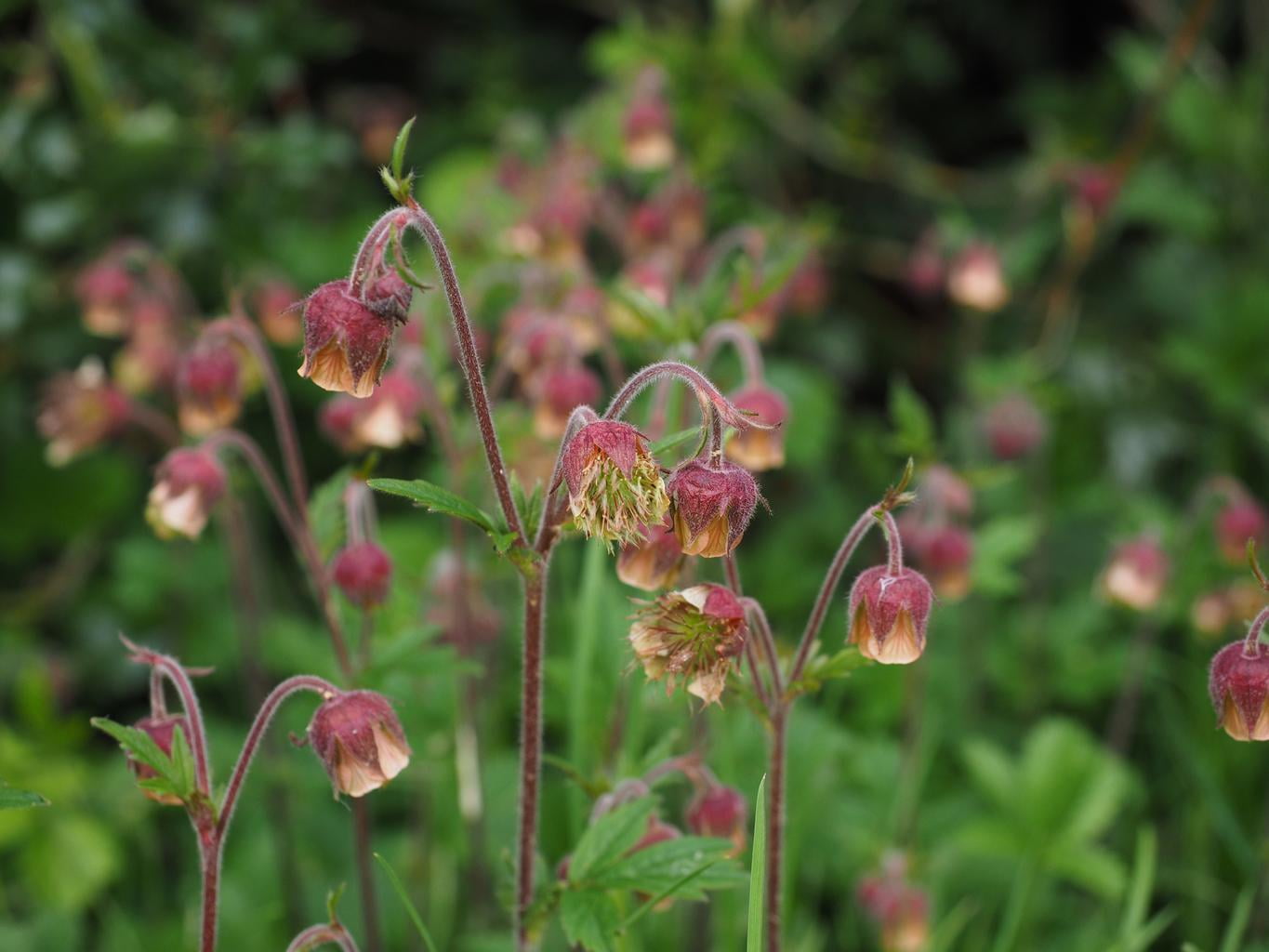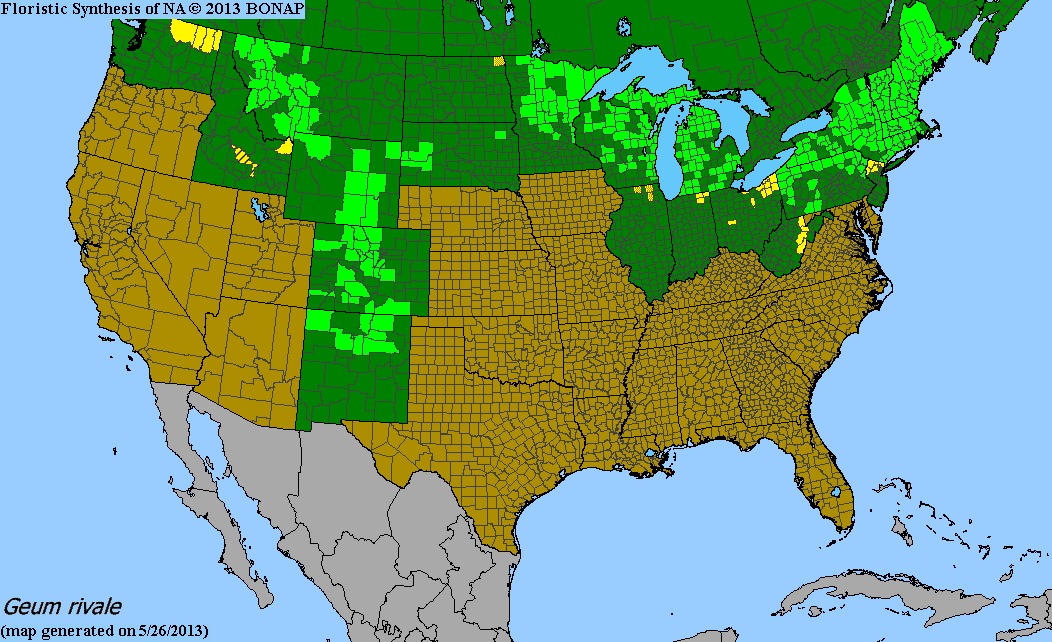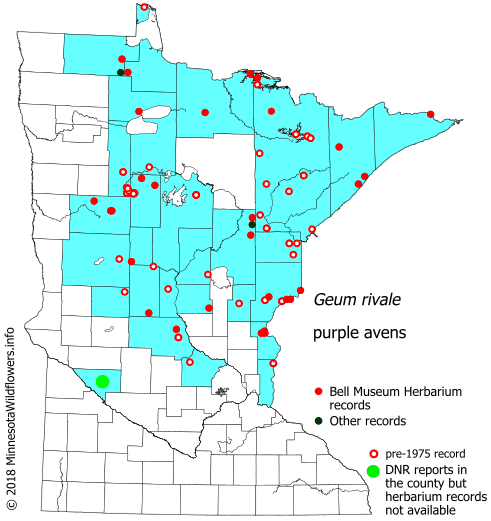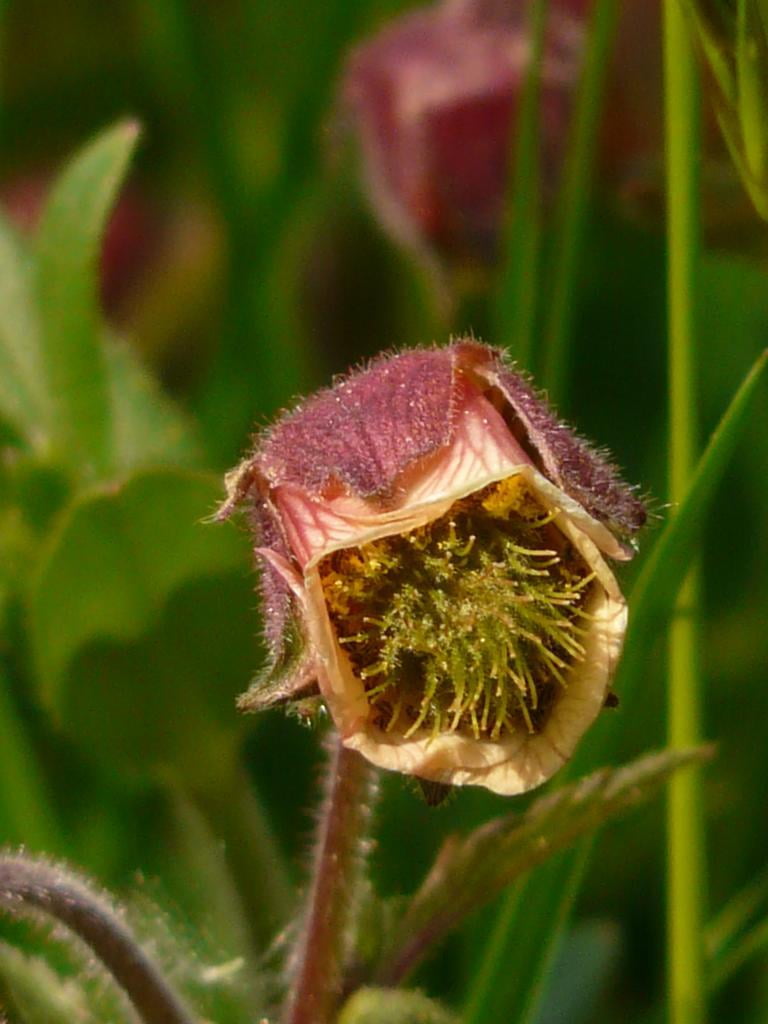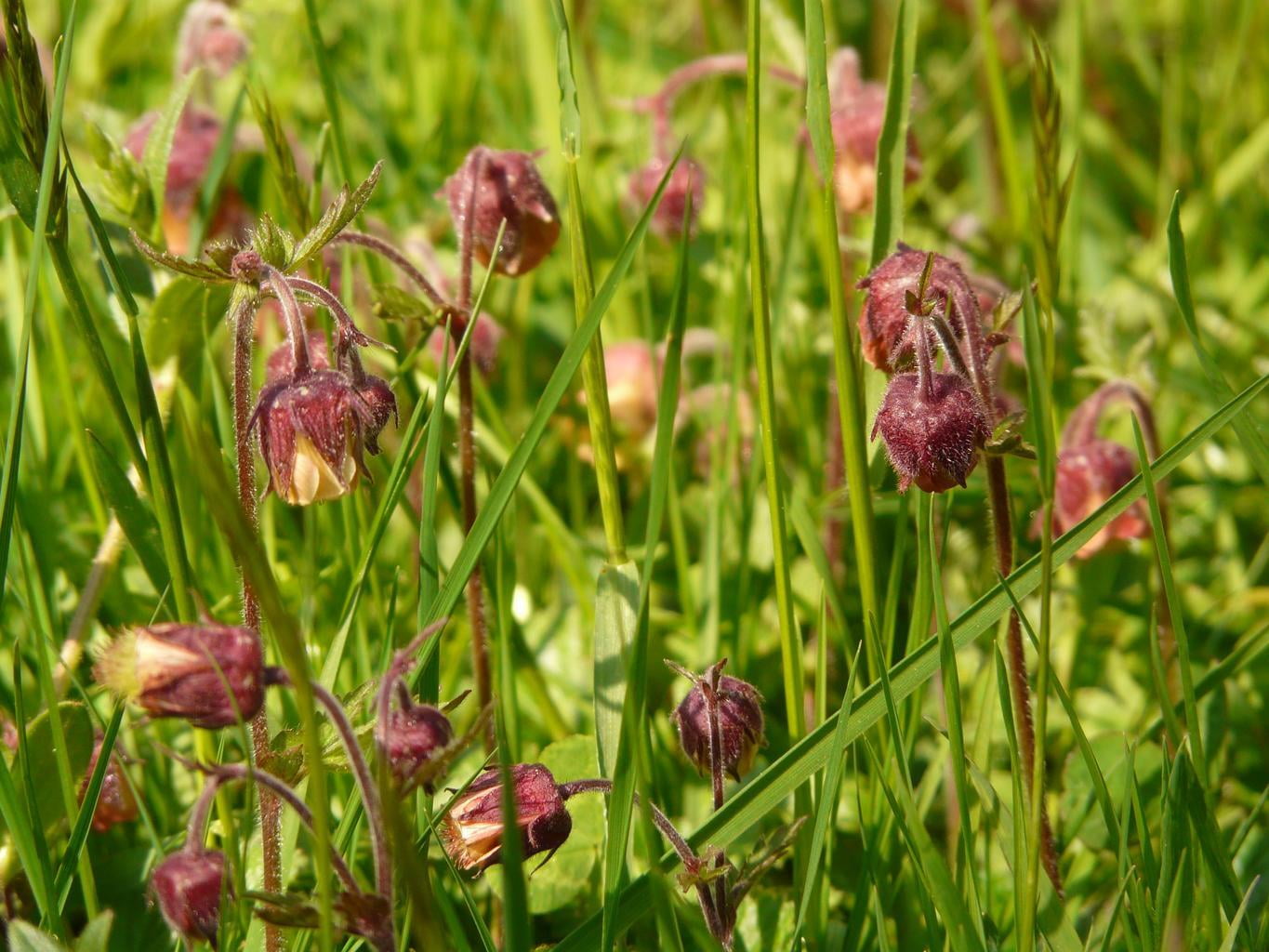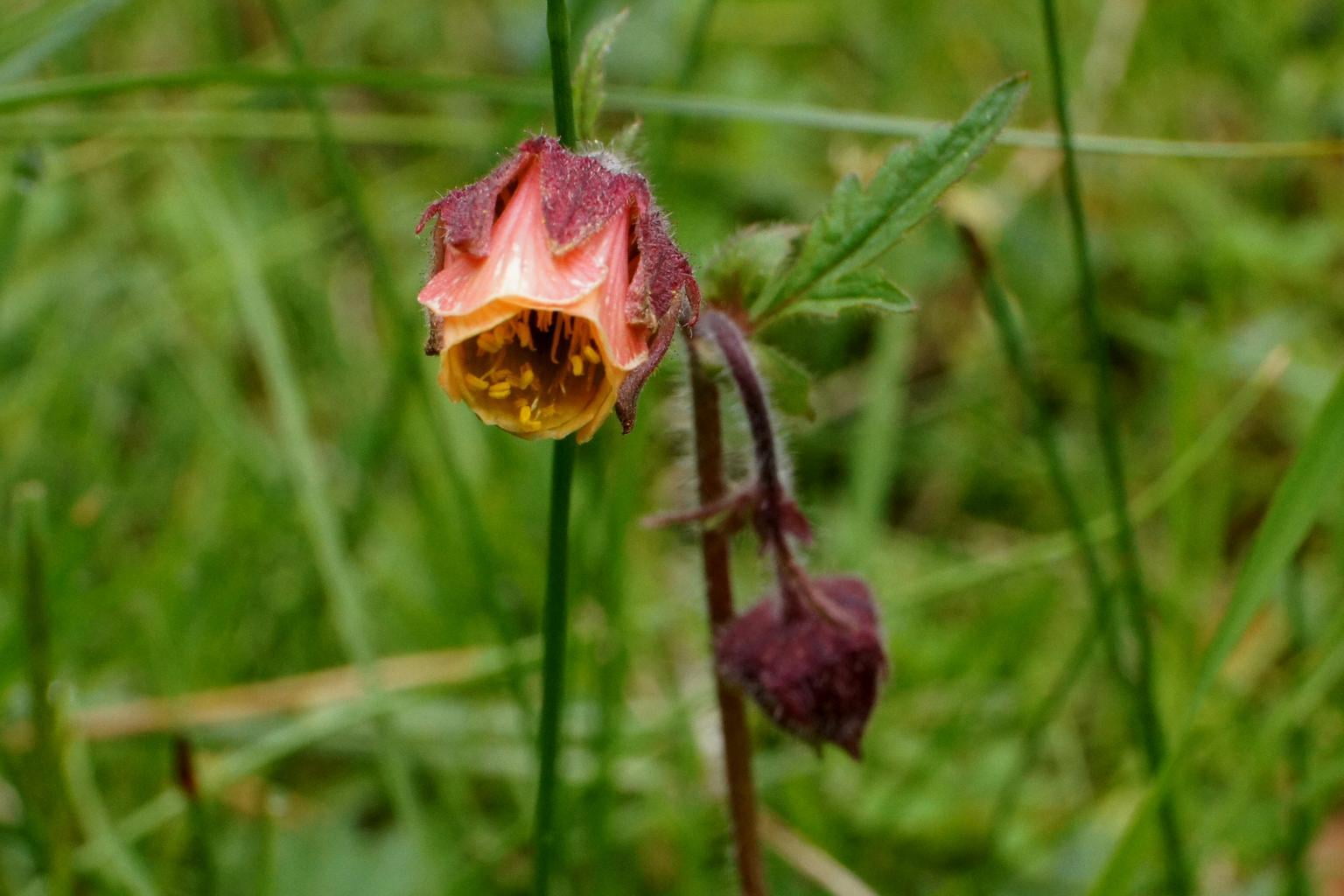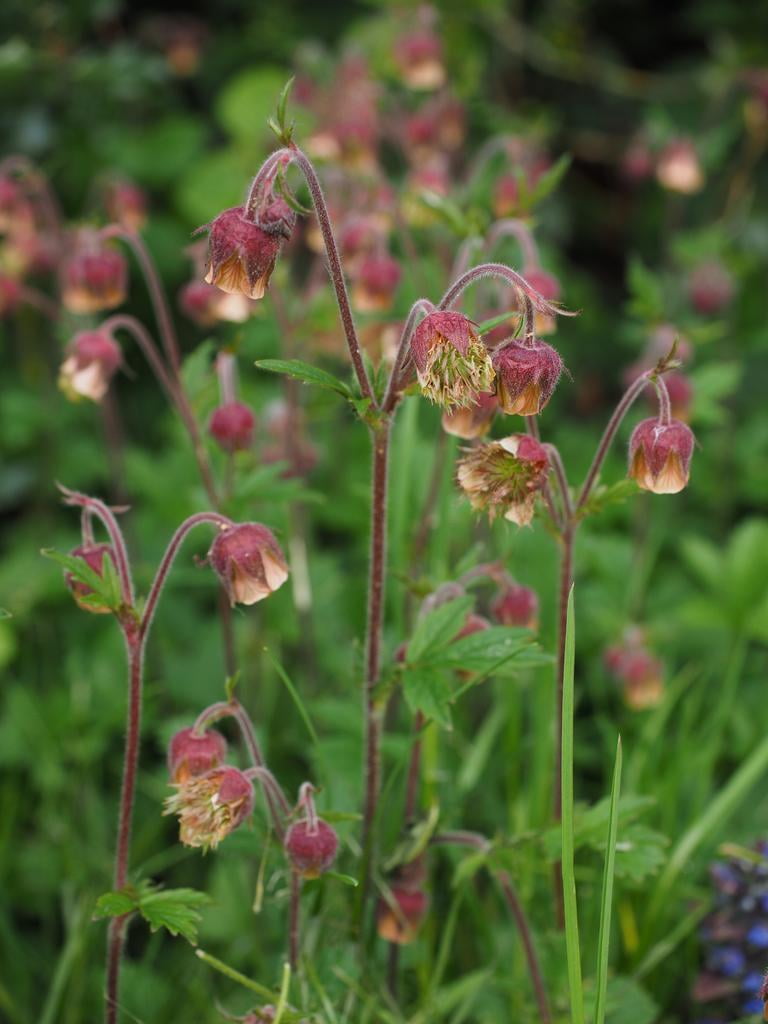Geum rivale
Purple avens Description:
Geum rivale, commonly known as water avens or purple avens, is a herbaceous perennial plant in the rose family (Rosaceae). It is native to North America and can be found growing in a variety of wetland habitats, including fens, swamps, bogs, and stream banks.
The plant typically grows to a height of 1 to 2 feet (30 to 60 cm) and has an upright habit with leaves that are divided into three leaflets. The basal leaves are long-stalked and toothed, while the stem leaves are stalkless and clasping. In the spring and summer, it produces nodding, bell-shaped flowers that are typically purplish-pink in color, although they can also be white or yellow. The flowers are about 1 inch (2.5 cm) in diameter and have five petals that are fused at the base.
Geum rivale is a hardy and easy-to-grow plant that prefers partial to full shade and moist, well-drained soil. It is commonly used in water gardens, bog gardens, and other wetland habitats. In addition to its ornamental value, it is also valued for its medicinal properties, as the roots have astringent and anti-inflammatory properties and have been traditionally used to treat a variety of ailments.
Native Range:
Purple avens can be found growing natively across the northern most states of the continental United States as well as Wyoming, Utah, and Arizona. In Minnesota, Purple avens is primarily found in the Northeastern portions of the state.
Standard Plant Information:
Plant Height: 1' - 2'
Bloom Time: June - July
Preferred Habitat: Does well in part shade to full sun. Often found in wet meadows, fens, swamps, and along the shores of streams and lakes.
Sowing:
For most homeowners, the best option is to scatter seed on the ground by hand broadcasting at a minimum of 16-64 pls ounces per acre. For even coverage, we recommend that you broadcast seed in perpendicular rows across the site to ensure even coverage.
You’ll want to broadcast any grass seed first, which will get raked into the soil lightly. Next, it is ideal to mulch the area lightly with either a clean (no seed) straw or preferably with our native Little Bluestem straw, sold at our retail garden centers. After a light mulching is complete, now it’s time to broadcast your native wildflower seeds, which should not be raked into the soil. A good rain or watering is sufficient to cover the seed.
Planting:
Simply dig a hole in the soil slightly larger than the plant’s roots. Ensure that the soil line of the plant is maintained during the transfer (i.e. the plant should be at the same level with the ground as it was in the pot). Pack any loose dirt back around the plant and make sure you water it well the same day to ensure it has the best chance of survival.

